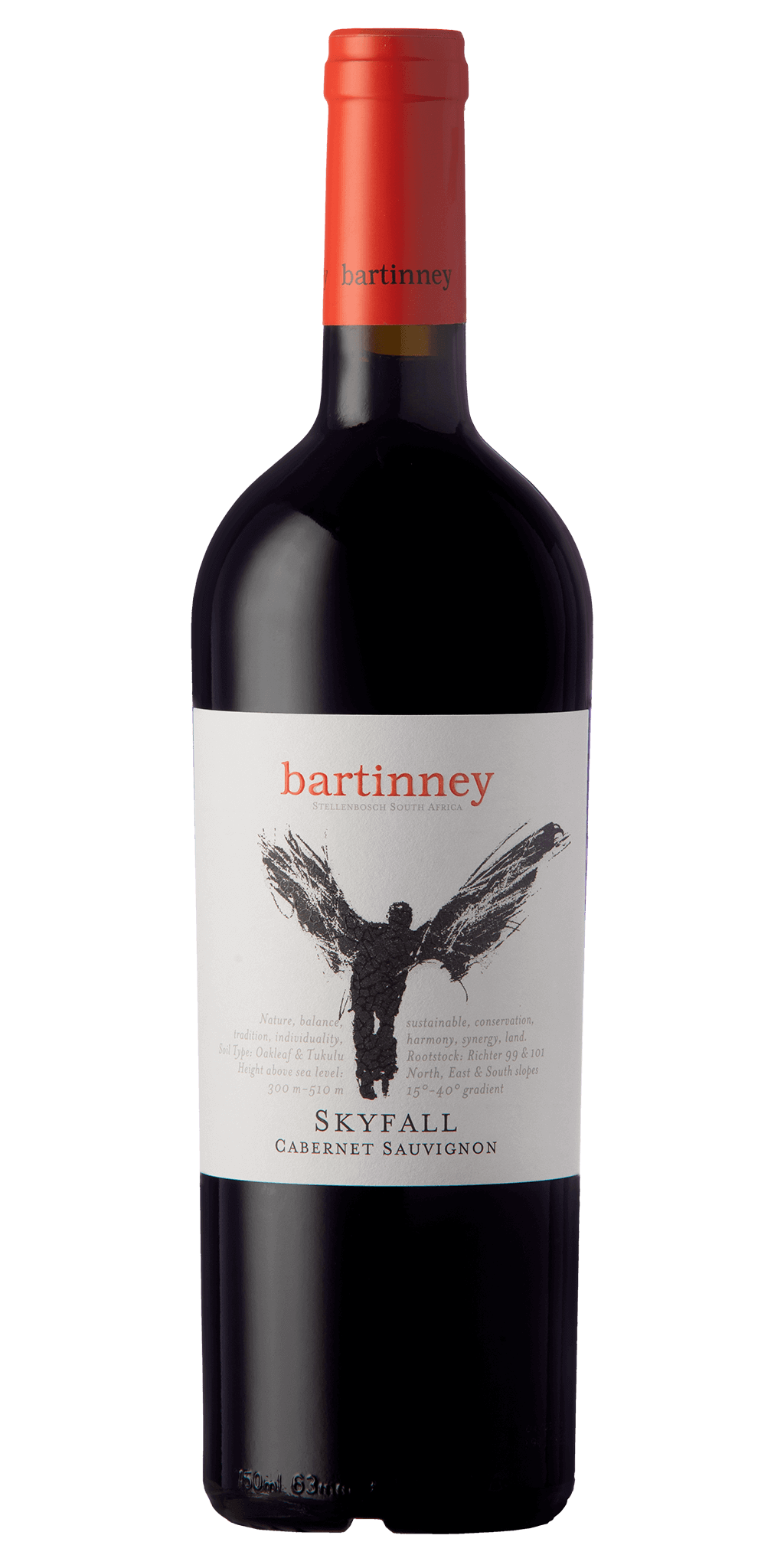Honest, down-to-earth and easy to drink. Pinotage sounds like it would fit right into your circle of friends. There’s many a reason why this grape varietal is popping up on more Michelin star wine lists and chilling in more household wine fridges.
Pioneering Pinotage
This red elixir is seen as South Africa’s signature variety and official national grape. Pinotage was first cultivated in South Africa in 1925. Professor Abraham Izak Perold – the first professor of viticulture at Stellenbosch University, cross created pinot noir and cinsault (known back in the day as Hermitage) seedlings. He did this in an effort to bring the taste of Burgundy, France to the African continent.

A tribute to Professor Perold – The father of Pinotage, at Lanzerac Wine Estate
Producing Pinotage
In 1941 Pinotage vines were planted at the Kanonkop Estate by Paul Sauer and Danie Rossouw. This was also where the first monovarietal Pinotage was bottled and released. Today 80 years later, Kanonkop Estate is still one of the leading Pinotage producers in South Africa. Shop Kanonkop wines online here

Paul Sauer was elected to Parliament in the same year that he became owner of Kanonkop.

This artwork and bust of Paul Sauer is on display at Kanonkop Wine Estate

Paul Sauer discussing wine with Danie Rossouw, the estate’s first farm manager
At 24 million litres a year and counting, Pinotage is one of the South African wine industry’s fairy-tale success stories and this seems to be just the bright beginning for this versatile varietal. Of the Top 10 most-planted wine grape varieties in South Africa, Pinotage is the only red cultivar to have grown in hectares over the past 10 years. Exports since 2001 have gone from just over 8 million litres a year to close to 19 million litres – reportedly contributing an estimated R495 million($3,4 million) to the local economy in 2017.

Pinotage has the inherent adaptability and capacity to produce high grape yields under ideal cultivation conditions
Profiling Pinotage
Pinotage is dark in color, scent and flavor. It’s a full-bodied, high alcohol wine with lots of darker berry fruit characteristics, such as blackberry, blackcurrant and its most distinctive note is that ever so slight smokiness. Pinotage has medium to high tannins and moderate acidity

Pinotage must be stored in full tanks and at constant temperatures of <20ºC

Pinotage has cellaring potential for up to ten years & more depending on the style and terroir
Pairing Pinotage
You can always look to its two parents – Pinot Noir and Cinsault, when you’re matching it with food. The Cinsault heritage gives it a compatibility with Mediterranean ingredients like peppers, feta and aubergines as well as rustic French fair like a bolognaise. Whereas a full bodied Pinot Noir and Pinotage will both pair well with pork and duck.
Being a proudly South African wine, you can’t go wrong pairing Pinotage with a decadent cut of meat like a sirloin or fillet, which will bring out the smokiness on the palate. For the warmer days a match made in culinary heaven is the Lanzerac Pinotage paired with a biltong (which can be replaced with beef carpaccio), feta and avocado salad or a selection of small plates like calamari, riblets & spicy potato wedges. Shop Lanzerac wine online here.

Lanzerac Wine Estate is very well known for their Pinotage and the phenomenal meals served at the estate
Pinotage also fairs well with heartier meals in the colder months. For a memorable dinner you can pair this delicious recipe from Crush online magazine with the big structured Beyerskloof Diesel Pinotage. Shop Beyerskloof wines online here.

Beyerskloof Diesel Pinotage pairs perfectly with this decadent fillet steak
FILLET STEAK WITH CAFÉ AU LAIT MUSHROOM SAUCE
SERVES: 4 | PREP TIME: 20 MINS | COOK TIME: 10 MINS
Ingredients:
The Coffee Rub
3 Tbsp (45 ml) vida e caffè Devra coffee beans, medium ground
2 Tbsp (30 ml) sea salt
1 Tbsp (15 ml) paprika
1 Tbsp (15 ml) brown sugar
1 Tbsp (15 ml) ground garlic
1 Tbsp (15 ml) onion powder
1 Tbsp (15 ml) mustard powder
1 Tbsp (15 ml) cumin
1-2 tsp (5-10 ml) chilli powder
1 tsp (5 ml) black pepper
Café au Lait Mushroom Sauce
1 ½ C (375 ml) fresh cream
1 ½ Tbsp (22,5 ml) freshly ground coffee
a knob of butter
150 g shiitake and shimeji mushroom mix
½ C (125 ml) good quality beef stock
1 Tbsp (15 ml) fresh thyme, chopped
1 Tbsp (15 ml) chives, chopped
sea salt and freshly ground pepper
The Steaks
canola oil
4 x 250 g centre cut fillet steaks
a big knob of butter
2 garlic cloves, whole but squashed
a big spring of thyme
a digital thermometer
Method
The Coffee Rub
Grind the vida e caffè Devra coffee to medium coarseness. Mix the rub ingredients together well and store in an airtight container until ready to use.
Café au Lait Mushroom Sauce
Add the cream and ground coffee to a small saucepan over medium heat and stir to combine. Bring the cream to a boil and then simmer for 1 minute before removing from the heat. Allow the cream to infuse for 15 minutes then strain the cream through a very fine sieve or a piece of muslin cloth. Set the spent coffee grains aside (here are a few ways you can repurpose them) and set the coffee cream aside until ready to use.
Melt the butter in a large frying pan over a medium-high heat. Fry the mushrooms for 3-4 minutes until golden brown, then remove the mushrooms from the pan a set aside.
Add the coffee cream and stock to the pan and bring to a boil. Simmer for a 5-7 minutes to reduce and thicken.
Add the mushrooms, thyme and chives to the cream and stir gently to combine. Season with salt and pepper and turn off the heat. Reheat the sauce when you are ready to serve your steaks.
The Steaks
Pat the fillet steaks dry and then season with coffee rub. Drizzle with canola oil and set aside.
Heat a large cast iron pan over high heat until the pan begins to smoke. Carefully place the oiled steaks into the pan and cook for 1 minute. Flip the steaks and cook for another minute then add the butter, thyme and garlic.
Carefully tilt the pan and baste the steaks with the foaming, melted butter. Continue cooking the steaks for 1 minute a side and basting with every flip for a total of 3-4 minutes a side depending on how you like your steak.
If you like your steak rare then aim for an internal temperature of 45-47 °C. If you prefer medium rare then aim for 50-52 °C. The steaks will continue to rise up to 5 °C in temperature while resting. Rest the steaks for at least 10 minutes.
Season the steaks and serve with warm café au lait mushroom sauce.

Kanonkop’s original tasting room
Follow Sip & Read to learn more about the wonderful world of wine and phenomenal wineries like Kanonkop, Lanzerac and Beyerskloof. Cheers!




 +1 888 812 2543
+1 888 812 2543